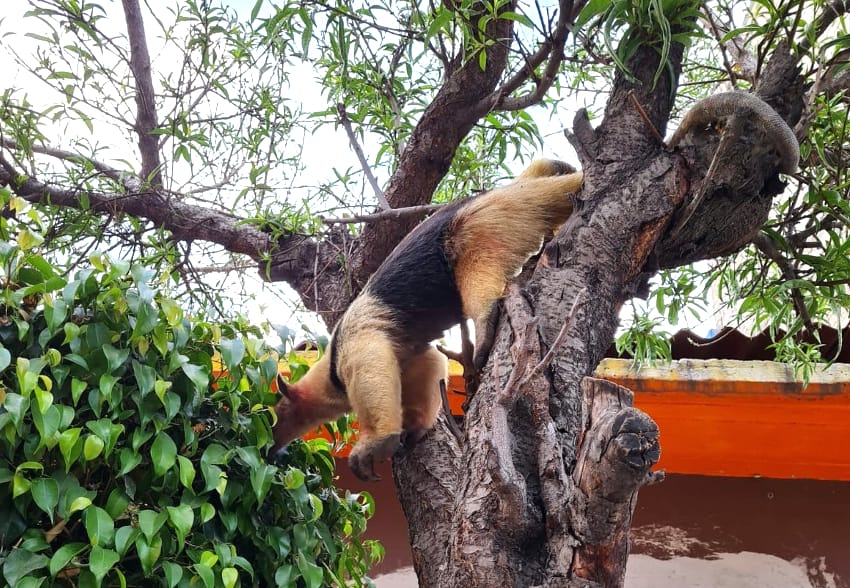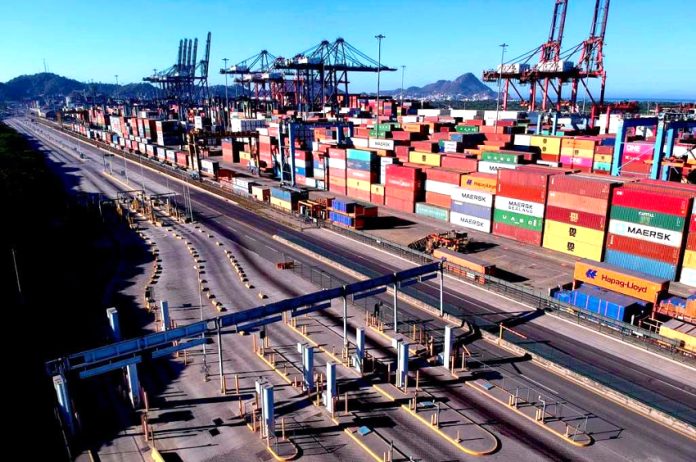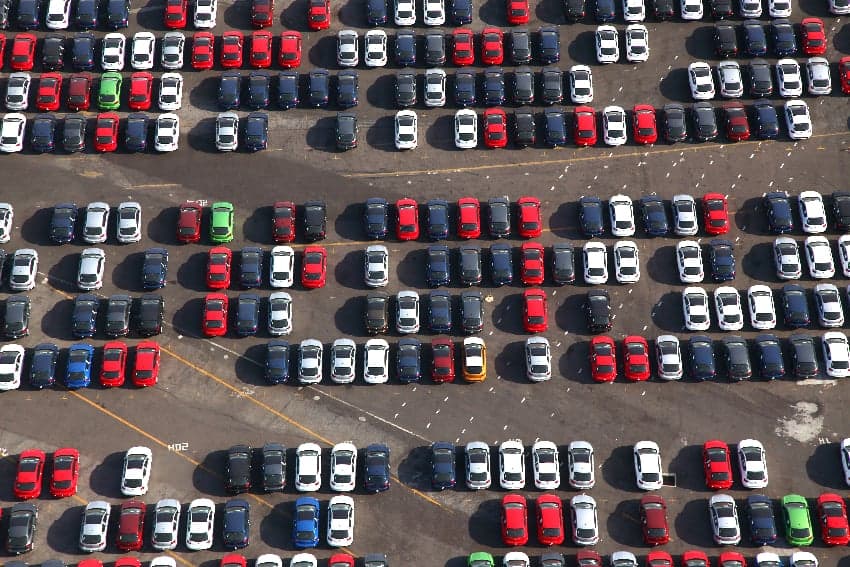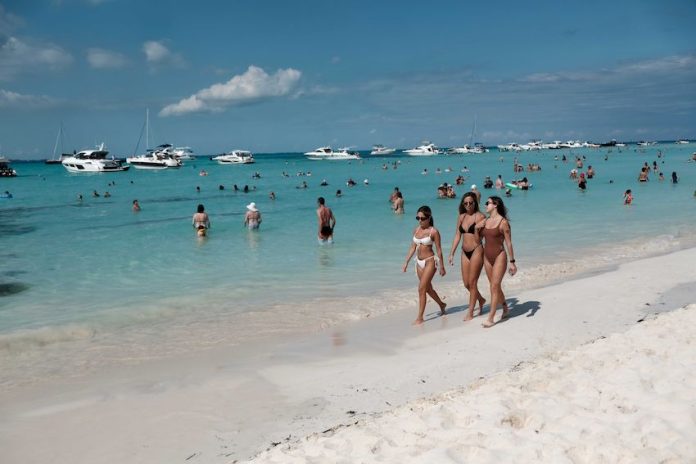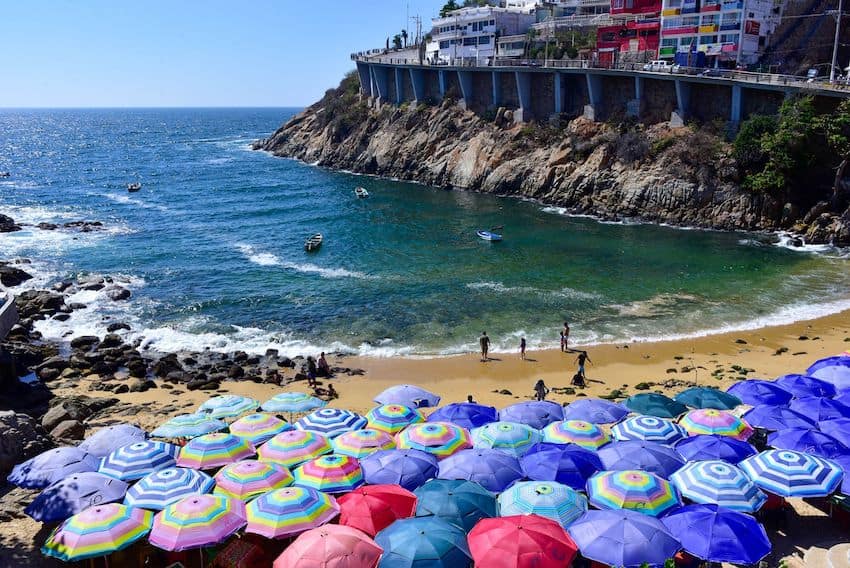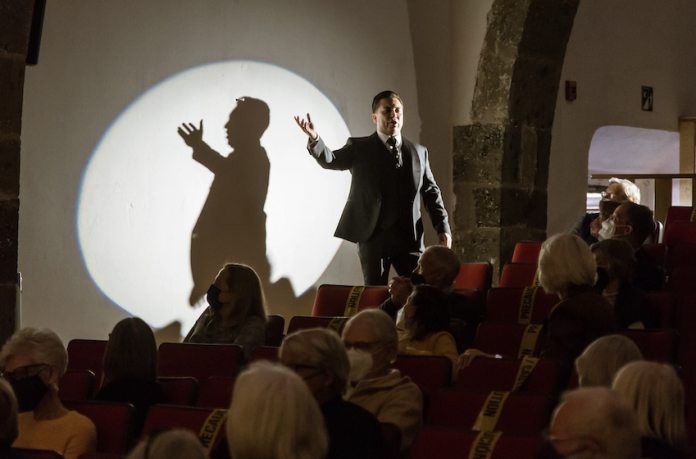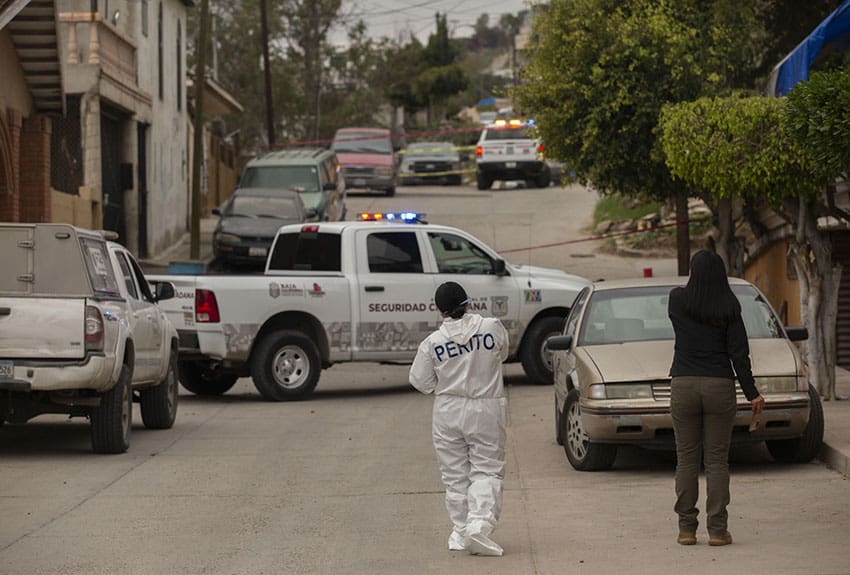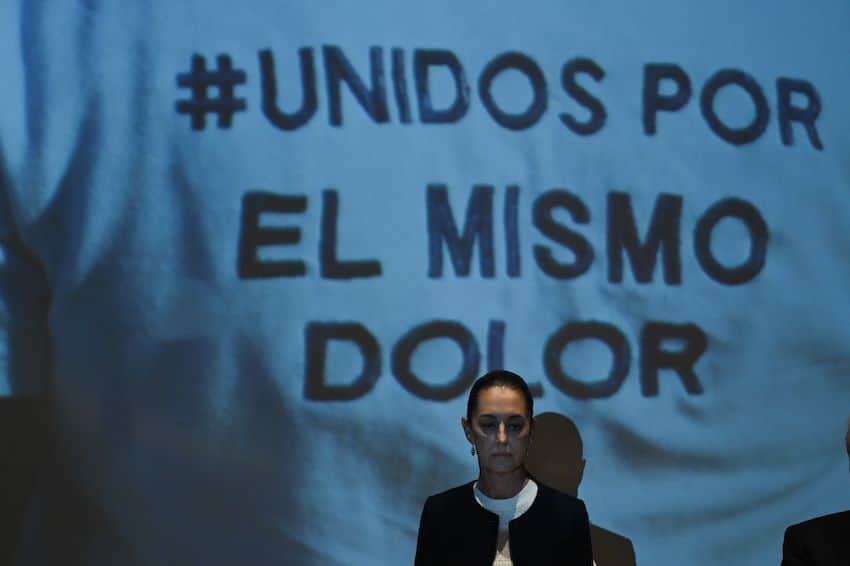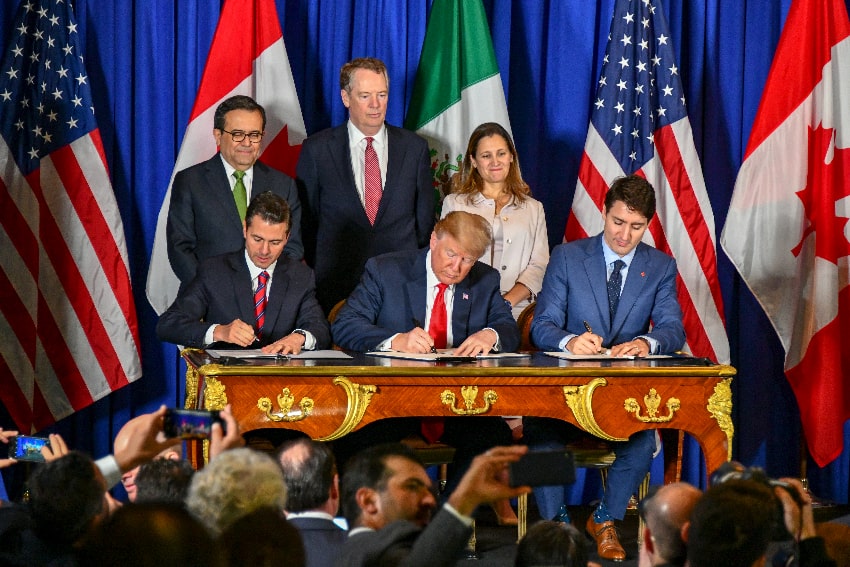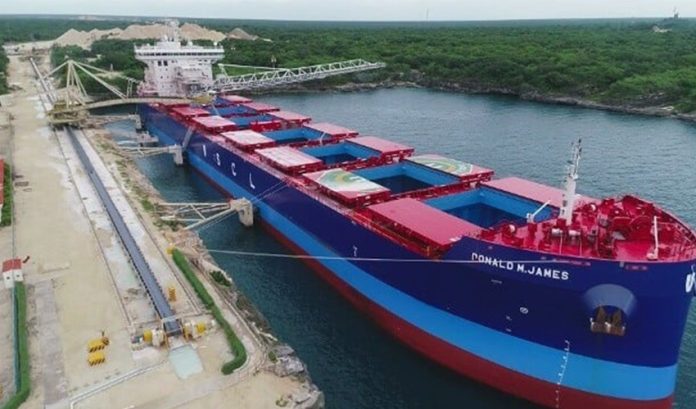Many years ago I bought a house in a little Mexican community situated at the edge of a huge forest. Among the many birds visiting my backyard were carpinteros — woodpeckers.
These were acorn woodpeckers, easily identified from afar by their bright red caps. But even if you couldn’t see one, you could immediately identify a carpintero bellotero, as they are called here, by its less than melodious cry.

Never would you be tempted to use the word “song” to describe its rasping “RAKA! RAKA! RAKA!” squawk, so unlike the cheery “ha-ha-ha HA ha!” of its American cousin Woody, whose famous call appears to have been modeled on that of the pileated woodpecker.
If these birds normally eat acorns, I thought, they might also like peanuts. So I put out a plate of peanuts. Sure enough, they were gone within an hour… all eaten by squirrels!
I decided to elevate the plate, suspending it in the air at the end of a long string.
This worked. The little redheads came, and I learned a few things about carpinteros.
First of all, they never seem to travel alone. If one discovers a plate of peanuts, it immediately notifies the rest of the family — in fact, the whole tribe. If you think one rasping squawk is noisy, you should hear 12 carpinteros going at it all at once.

Woodpeckers, I think, were not designed by Mother Nature to perch on the edge of a plate suspended in the air.
“They’ll never get the hang of it,” said my wife, watching the birds’ clumsy attempts to get a peanut off that plate swinging in the air. “Give them time,” I said. “They’re clever little creatures.”
Sure enough. soon the whole tribe had mastered the technique. One by one they would grab the plate, steal the peanuts and then, like a guilty thief, they would make a beeline for a far-off tree branch where they could consume their snack in solitude — far from any squirrels.
Squirrels were their mortal enemies. Anytime a carpintero came upon a squirrel, he would call in the whole tribe. Crying “RAKA! RAKA! RAKA!” each of them would try to dive bomb the squirrel, whose only defense was to hunker in place covering its head and back with its bushy tail.
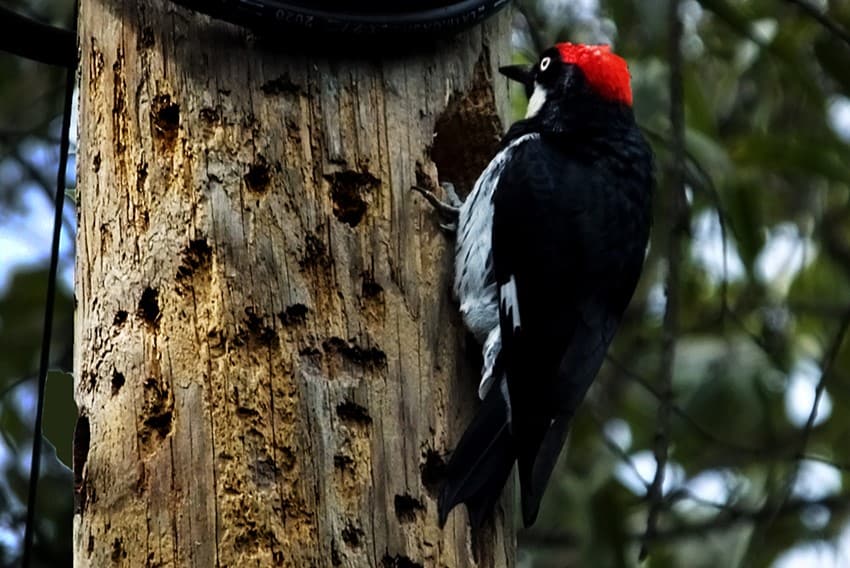
Elsewhere in my community, the woodpeckers have learned to steal what they can of gardeners’ recently heated tortillas, as well as kibble put out to feed the family dog.
Evidence of what they ate before we humans “developed” the neighborhood can be seen during a walk in the woods.
You don’t have to go far to discover a woodpeckers’ granary. These are pine trees filled with countless holes, many of them stuffed with acorns. Two species of local oak trees produce acorns in two shapes: round and long. The long, rocket-shaped ones must be more delicious, because they are the only ones you’ll find stuffed into the holes in the trees. Inside some of them may lurk the larva of the acorn weevil… perhaps providing the woodpecker with a tasty dessert.
Our woodpeckers are clever when it comes to food, but when it comes to home construction skills, I think they could use a few more millennia of evolution.

This was demonstrated when some carpinteros decided to move into a dead tree standing next to our house. The tree was so far gone that all that remained of it was the standing trunk and one lopped off horizontal branch.
It was exactly in the crux of this thick, truncated branch, that a carpintero decided to create a home.
“Tock, tock, tock!” for weeks on end.
A hole grew at that spot, bigger and bigger, deeper and deeper. We watched the process of excavation high above our rooftop, and the eventual installation of the lady of the house.

All went well until one night, in the wee hours of the morning, we were awoken from our sleep by a tremendous crash.
I jumped out of bed, grabbed a flashlight and ran outside. There on the ground lay the thick, heavy branch which, fortunately for us, had just missed the edge of our roof as it fell from the tree. There was no sign of the brilliant construction engineer who had picked the very worst spot on that tree to build a home.
I noted a similar naive approach to homemaking on the wooden telephone pole outside our gate. The upper end of the pole was already full of woodpecker holes and still I could hear the tock tock tock of yet another excavation.
“Just how many holes can a pole take?” I asked my gardener, Don Pancho.
Sure enough, one day, the pole snapped and so did our telephone line. A few days later, a big Telmex truck lumbered up the cobblestone road and a new telephone pole was installed.
“Look at that,” I commented to Don Pancho. “They’ve brought us another wooden pole, just like the last one. The woodpeckers will be delighted, but why don’t they install a concrete pole or a metal one — can’t they see what’s going to happen? “
Don Pancho tugged at his beard and smiled. I could see a gleam of humor in his eye.
“Pos sí. But they know what they’re doing. It’s what we call the Ley de la Chamba here in Mexico…. if they use a concrete pole they wouldn’t be able to come back here every year to put up a new pole. They would lose that chamba.” Chamba is slang for a job.

“You can see the Ley de la Chamba at work right here on this cobblestone road,” Don Pancho went on. “There are two ways to repair these roads: the professional way, which will last for years, or the other way, which only lasts a few months. The Ley de la Chamba guarantees they’ll choose the second option.”
So the wooden pole was installed, and over the last few months the woodpeckers have enthusiastically tunneled into it from every direction.
How many more days before it snaps in two, I wonder, and I’ll see with my own eyes the proof that the Law of Chamba reigns in Mexico. And that, clever as they may be in other ways, when it comes to home building, carpinteros are just plain mensos — dummies.
John Pint has lived near Guadalajara, Jalisco, for more than 30 years and is the author of A Guide to West Mexico’s Guachimontones and Surrounding Area and co-author of Outdoors in Western Mexico. More of his writing can be found on his website.
